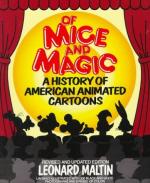
|
| Name: _________________________ | Period: ___________________ |
This test consists of 15 multiple choice questions and 5 short answer questions.
Multiple Choice Questions
1. How long did it take to create the 1 minute "Heigh Ho" animation?
(a) 1 month.
(b) 6 months.
(c) 3 months.
(d) 1 year.
2. When was Red Seal Pictures formed?
(a) 1921.
(b) 1924.
(c) 1939.
(d) 1934.
3. What was Disney's first animated feature?
(a) Steamboat Willie.
(b) Snow White and the Seven Dwarves.
(c) Newman's Laugh-O-Grams.
(d) Fantasia.
4. Which of the following was a fault of Fleischer's?
(a) Bad at creating characters.
(b) Bad at being original rather than copying.
(c) Bad at creating storylines.
(d) Bad at doing business.
5. What was Disney able to do well that others could not?
(a) Mix drama and comedy.
(b) Mix cartoon with live-action.
(c) Create interesting characters.
(d) Create settings vital to character development.
6. How did Disney's employees describe his outlook?
(a) Nonchalant.
(b) Enthusiastic.
(c) Calm.
(d) Angsty.
7. According to those that did not believe that animation was real, what was McCay using to trick the audience?
(a) Actual animals.
(b) Wires.
(c) Ropes.
(d) Films.
8. Which of the following describes McCay's first feature?
(a) No storyline.
(b) No main character.
(c) No personality.
(d) No frames per second.
9. Who created a metamorphosis of celebrity caricatures?
(a) Fleischer.
(b) Disney.
(c) Maltin.
(d) Zukor.
10. What did Fleischer miss out on?
(a) Merchandising.
(b) Creating unique stories.
(c) Feature films.
(d) Television spots.
11. Which is an example of a cartoon including live-action?
(a) The Lion King.
(b) Aladdin.
(c) Mary Poppins.
(d) Fantasia.
12. When did Disney's focus move to his theme parks?
(a) 1970's.
(b) 1950's.
(c) 1960's.
(d) 1940's.
13. What did Fleischer tend to ignore?
(a) Setting.
(b) Music and sound.
(c) Character development.
(d) Background animation.
14. In the early days of animation, how many frames per second were required for an animated piece?
(a) 14.
(b) 24.
(c) 16.
(d) 20.
15. What did Dave Fleischer annoy workers with?
(a) His desire to create musicals.
(b) His desire to create only animal-like characters.
(c) His desire to create voluptuous female characters.
(d) His desire for gags.
Short Answer Questions
1. What was the animated film that Fleischer created with Dr. Lee DeForest?
2. When did Bray apply for a patent?
3. What was Fleischer's most popular and long-lasting invention?
4. What was the name of the feature Fleischer worked on with the American Museum of Natural History?
5. According to McCay, what should animation be?
|
This section contains 344 words (approx. 2 pages at 300 words per page) |

|




